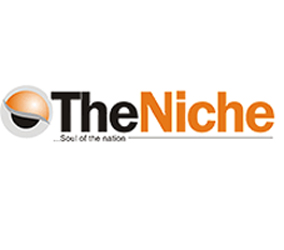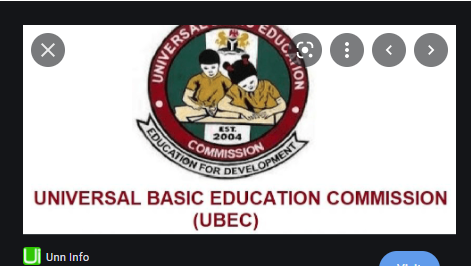States receiving less funds do better in children education
By Jeph Ajobaju, Chief Copy Editor
Nine states among those receiving the highest federal allocations also have the highest number of children who are not in school across all zones, further tarnishing Nigeria in the ranks of the lowest literacy rates in the world.
On the list are Oyo and Ondo, embarrassments to the South West where free primary education was introduced in 1955 and upgraded to free secondary education in 1979 – which has produced in the zone the most educated population in the country.
Others with the highest number of unschooled children are Kano, Akwa Ibom, Borno, Katsina, Jigawa, Niger, and Kaduna.
The data is collated from monthly federal allocations to the 36 states and the number of out-of-school children from 2015 to 2018 published by the National Bureau of Statistics (NBS), analysed by PREMIUM TIMES.
__________________________________________________________________
Related articles:
26 states neglect N29.38b UBEC fund. Enugu, Ogun, Kwara, Katsina included
FIRS generates N4.2tr revenue. Falls short of target
__________________________________________________________________
About N7.5 trillion was shared in the four years among the states as federal allocation, according to the NBS, with oil-rich Akwa Ibom, Delta, Rivers, Bayelsa, and Lagos the highest beneficiaries.
This excludes allocation of the Federal Capital Territory (FCT) in 2016.
Akwa Ibom received the highest allocation of N606 billion yet had the second-highest number of unschooled children.
Kano had the highest number of children out of school despite receiving N249.4 billion, the sixth highest allocation.
Others with high allocations that failed to keep children out of the streets are
- Ondo – N199.3 billion
- Borno – N185.2 billion
- Katsina – N184.2 billion
- Oyo – N176.2 billion
- Jigawa – N174.6 billion
- Niger – N172.7 billion
- Kaduna – N171.8 billion
Data on the number of children who were out of school in the period published by the Universal Basic Education Commission (UBEC) is as follows
- Kano – 989,234
- Akwa-Ibom – 581,800
- Katsina – 536,122
- Kaduna – 524,670
- Oyo – 418,900
- Jigawa – 337,861
- Borno – 330,389
- Ondo – 317,700
- Niger – 292,700
Two of the top four allocation receivers, Delta (N541.8 billion) and Bayelsa (N438.7 billion), and the 10th, Edo (N180.4 billion), had some of the lowest out-of-school children estimates.
- Delta – 145,996
- Edo – 140,798
- Bayelsa – 53,079
Total earnings against out-of-school estimates
All states and the FCT made a combined revenue – Federation Account Allocation Committee (FAAC) and internally generated revenue (IGR) – of about N11.1 trillion in the four years.
The figure excludes the IGR for Ebonyi and the FCT in 2015; IGR and FAAC for the FTC in 2016 and its IGR in 2017.
Lagos alone accounted for N1.6 trillion of the more than N11 trillion all the states received. Other figures are
- Rivers – N865.5 billion
- Delta – N737 billion
- Akwa Ibom – N684.2 billion
- Bayelsa – N481.5 billion
- Ogun – N391.7 billion
- Kano – N380.5 billion
- Edo – N276.4 billion
- Oyo – N257.8 billion
- Kaduna – N256.4 billion
- Ondo – N253.8 billion
- FCT – N233.4 billion
- Enugu – N229.8 billion
- Anambra – N225.7 billion
- Abia – N214.5 billion
Akwa Ibom, Kano, Oyo, Ondo, and Kaduna had the largest number of unschooled children. Delta, Bayelsa, Edo, the FCT, Enugu, Anambra, and Abia had the lowest.
Only Lagos and Ogun depended less on federal allocation as they made more IGR than what they received from the FAAC.
Unschooled children
More than half of Nigeria’s 10.2 million out-of-children are in 10 states, according to data UBEC published in 2018 which was corroborated by the NBS in its report on women and men in 2020.
All the 10 states have a combined 5.2 million children not attending primary school.
More than 60 per cent of the 10.2 million are boys, which represent more than 25 per cent of the total 40.8 million children of primary school age (between six and 11 years).
Which means that as of 2018, one out of every four Nigerian children had no access to primary school education.
Least FAAC receivers with lowest numbers of out-of-school children
Nine of the bottom 15 federal allocation receivers in the four years are among the bottom 15 states with the least unschooled children.
Their allocations and number of children out of school are as follows:
- Osun (N90.6 billion) – 165,114 children
- Ekiti (N120.2 billion) – 50,945
- Cross River (N122.2 billion) – 97,919
- Gombe (N132.9 billion) – 162,000
- Kwara (N133 billion) – 84,247
- Ebonyi (N135.5 billion) – 145,373
- Nasarawa (N138.9 billion) – 187,000
- Enugu (N153.3 billion) – 82,050
- Abia (N158.7 billion) – 91,548
Least FAAC plus IGR earners with lowest numbers of unschooled children
- Osun – N129.6 billion
- Ekiti – N138 billion
- Ebonyi – N149.1 billion
- Gombe – N153.2 billion
- Nasarawa – N160.3 billion
- Cross River – N186.3 billion


